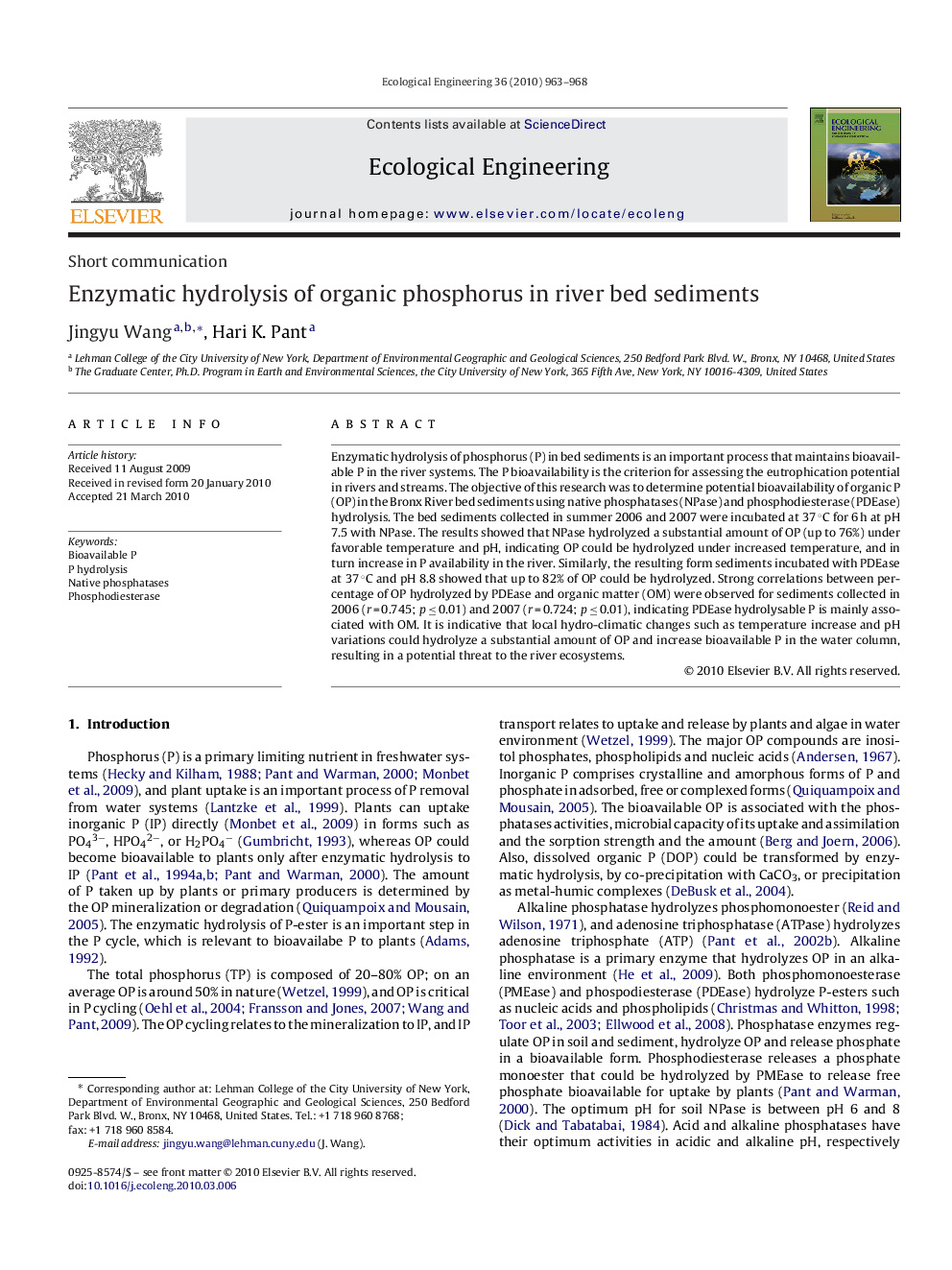| کد مقاله | کد نشریه | سال انتشار | مقاله انگلیسی | نسخه تمام متن |
|---|---|---|---|---|
| 4390449 | 1305174 | 2010 | 6 صفحه PDF | دانلود رایگان |

Enzymatic hydrolysis of phosphorus (P) in bed sediments is an important process that maintains bioavailable P in the river systems. The P bioavailability is the criterion for assessing the eutrophication potential in rivers and streams. The objective of this research was to determine potential bioavailability of organic P (OP) in the Bronx River bed sediments using native phosphatases (NPase) and phosphodiesterase (PDEase) hydrolysis. The bed sediments collected in summer 2006 and 2007 were incubated at 37 °C for 6 h at pH 7.5 with NPase. The results showed that NPase hydrolyzed a substantial amount of OP (up to 76%) under favorable temperature and pH, indicating OP could be hydrolyzed under increased temperature, and in turn increase in P availability in the river. Similarly, the resulting form sediments incubated with PDEase at 37 °C and pH 8.8 showed that up to 82% of OP could be hydrolyzed. Strong correlations between percentage of OP hydrolyzed by PDEase and organic matter (OM) were observed for sediments collected in 2006 (r = 0.745; p ≤ 0.01) and 2007 (r = 0.724; p ≤ 0.01), indicating PDEase hydrolysable P is mainly associated with OM. It is indicative that local hydro-climatic changes such as temperature increase and pH variations could hydrolyze a substantial amount of OP and increase bioavailable P in the water column, resulting in a potential threat to the river ecosystems.
Journal: Ecological Engineering - Volume 36, Issue 7, July 2010, Pages 963–968